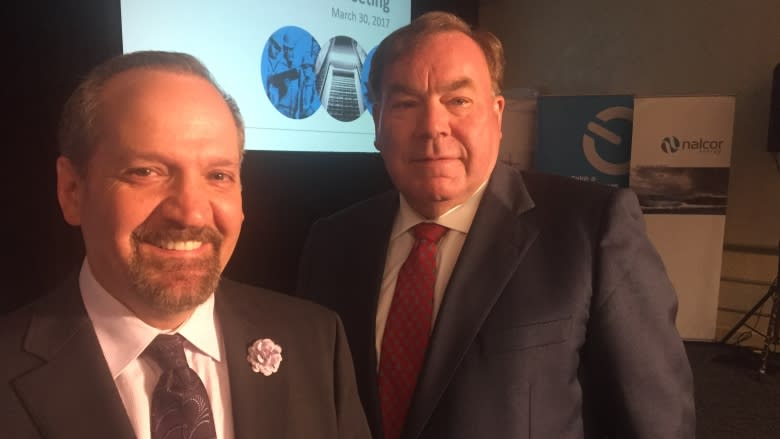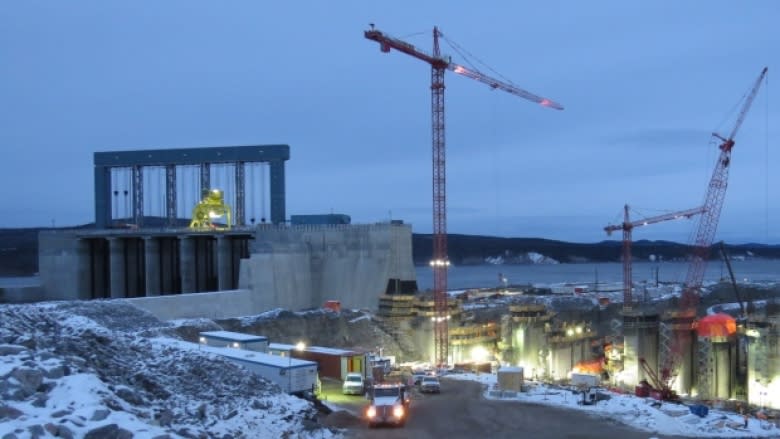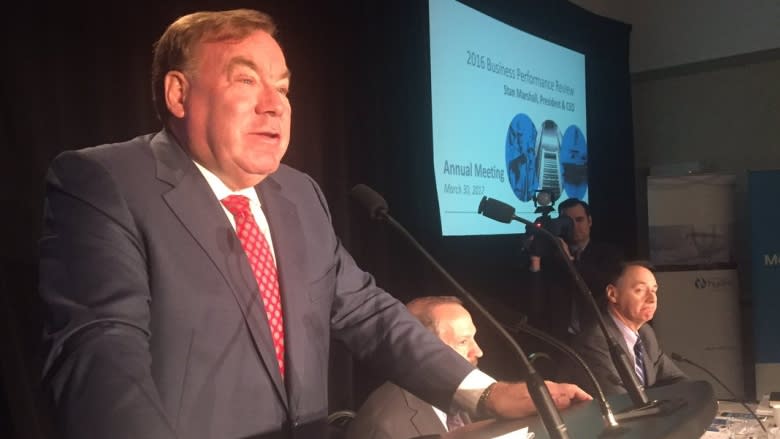Financial bloodletting at Muskrat Falls appears to have stabilized
Nalcor Energy CEO Stan Marshall offered a little ointment to those up-in-arms over the financial bloodletting and delays at the Muskrat Falls project.
It's likely that costs for the controversial hydroelectric project will now surpass $12 billion, but that's only slightly up from the $11.7 billion figure he was using last year, suggesting the spiraling costs now appear to be under control.
"We're now talking about one or two percentage points. We're not talking about 30 per cent, 40 per cent increases in costs," Marshall said Thursday.
Marshall points to 'significant progress'
The higher costs are driven mainly by the nearly $300 million in extra money for Astaldi, the company building the powerhouse, and the "tens of millions" spent protecting the Muskrat Falls site in Labrador from ice damage this past winter, Marshall said.
Marshall also said "significant progress" is being made on the project, and Astaldi is 20 per cent ahead of schedule on the power generation facility in Labrador so far in 2017.
He's not anticipating any more surprises as the final one-third of the project is completed over then next three-plus years.
"Right now, unless something brutal happens in the winter in Labrador, something hits me out of the sky, I'm not expecting anything major, other than the facts I just talked about.," Marshall said.
Marshall gave that update during Nalcor's annual general meeting in St. John's Thursday, his first since assuming the role of president and CEO a year ago.
As expected, Muskrat Falls was a focus, with Marshall saying 2017 will be a big year for the project.
He said many of the major contracts have now been awarded, and this reduces much of the risks associated with higher costs.
"We've gone from a very critical situation to a difficult one," said Marshall.
"We've gone from a situation where I didn't know from day-to-day whether I had to lay off 4,000 workers to one where that part of it is taken care of and now we're focusing on costs and those sorts of things. Refining it. Tremendous progress."
Marshall said another key part of the project, the main dam on the Churchill River, will begin this spring, and the powerhouse will be enclosed by the end of 2017.
And history could be made in mid-2018 when recall power from the Upper Churchill Project begins flowing into the island of Newfoundland over a new transmission system that is now nearing completion.
'There's an opportunity for savings'
The power will be used to replace costly oil-fired generation at the Holyrood station, Marshall explained, though he could not say what this will mean for power rates.
Once Muskrat Falls comes onstream in 2020, power rates have been forecast to double, and Marshall has been exploring way to mitigate those increases.
Power from the massive Upper Churchill project could help. He's also not ruling out the possibility of purchasing power from outside the province and importing it via the new Maritime Link with Nova Scotia, which is expected to be complete later this year.
"There's an opportunity for savings. We're going to seize it. We're working on it. And it will be real," said Marshall.
"If we can buy power and bring it into the island cheaper than Holyrood, we're going to do it."
A profitable year
Meanwhile, Nalcor is reporting a return to profitability.
The corporation recorded a profit of $136 million in 2016, following a $16-million loss in 2015.
Revenues were up slightly in 2016 to $824 million, and the value of Nalcor's assets also surged as construction on the controversial Muskrat Falls project continued.
The improved numbers are attributed to increased revenue from higher oil and gas production, with Nalcor holding an equity stake in several offshore projects.
Newfoundland and Labrador Hydro, a division of Nalcor, was also able to cut costs.
Marshall attributed the turnaround to a reorganization and focus on "effective execution of our priorities."




